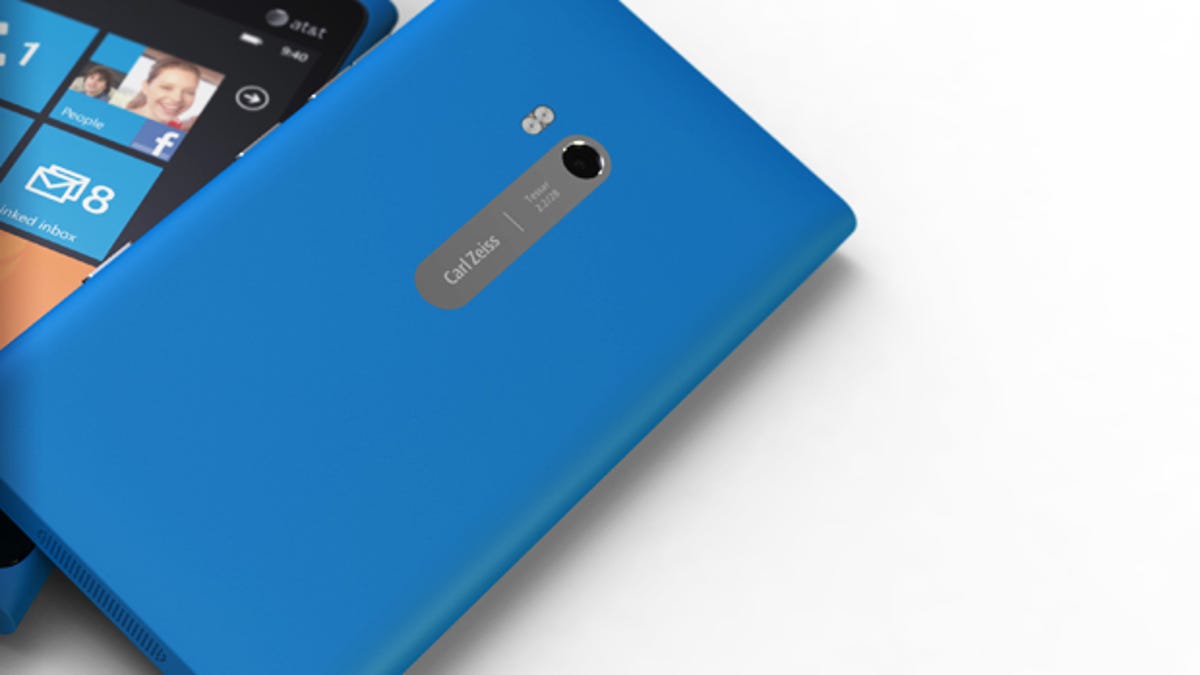If Nokia wants to stand out, it needs to get radical
In a recent interview, Nokia's head of design said there is still room for evolution in the way we use smartphones. Well, it's time to get moving.

commentary Nokia needs to embrace the radical, if its smartphone business wants to thrive.
Over the past year, the Finnish company has undergone some dramatic shifts--embracing Windows Phone, dropping Meego, and relegating its longtime Symbian platform to lower-end devices--all in an effort to turn itself around. The company's recent line of Lumia Windows Phone, featuring clean, colorful designs and the latest version of Microsoft's critically lauded mobile platform, mark a positive development. But if Nokia really wants to succeed, the Lumia phones should represent only the beginning of its smartphone revolution.
Fortunately, it appears that Nokia has the right mind-set. In an interview with The Guardian, Marko Ahtisaari, head of the company's hardware and software design team, said there remains more opportunities to create unique experiences on the smartphone.
"There's a point of view about design that all innovation in the interaction with the phone has been done," Ahtisaari told The Guardian. "Nothing could be further from the truth."
Anthisaari compares smartphone design now to the car industry in the 1880s, noting it took 15 years before cars evolved to the basic design we use now, specifically with the steering wheel in the front, rather than in the back like a boat tiller. He believes that smartphones could see a similarly massive change down the line.
"We're in the middle of that part of the evolution of the interaction," he said.
Ahtisaari, of course, is referring to the now all-too-familiar feel of iOS, with its screen of multiple apps and single home button, and Android, which uses a similar home screen format but adds widgets and a tray for applications.
During the interview, Anthisaari laid out the advantages of Windows Phone, and touted the care and work that went into the design of the Lumia phones. Anthisaari discussed how the Windows Phone devices' feel different than Android and iOS devices, a topic often broached by Microsoft and Nokia executives. Indeed, Windows Phone's live tiles, as well as its bold contrasting colors and fonts, are a breath of fresh air.
Anthisaari also echoed another benefit of the software: the ability to jump in quickly and accomplish a task without keeping your head down, staring at the device for long stretches of time. It was part of a poorly received ad campaign that Microsoft initially rolled out to drum up attention for its mobile platform.
The customer response was, "If the phone was so great, why would I want to spend less time with it?"
But Anthisaari and Microsoft have a point, when it comes to the ease of use and "glanceability" of a device. I would agree that smartphones have largely consumed too much of our lives, and there is something to be said for the ability to quickly check for incoming e-mail and messages, then move on.His beliefs run counter to the general thinking that smartphone design innovation--particularly with hardware--has somewhat flatlined. Many smartphones now share many of the same qualities, including a touch screen, a thin frame, one or multiple buttons at the bottom, and a few buttons along the sides. The various radios, batteries, processors, and memory all require a certain amount of space, with physics limiting how creative designers can get.
But Anthisaari doesn't seem to take stock in those limitations, which is a good thing. Nokia still has a long uphill battle, if it wants to breach some of the major smartphones markets, including the United States, where its business and brand have been weak for a long time.
One way to get some attention is through some radical designs, both with software and the hardware. Nokia is no stranger to offbeat designs, including the 7280, which was compared to lipstick, and the N-Gage, an early take on a phone optimized for gaming. Those designs didn't fare well, but you have to applaud Nokia for trying.
Having unique designs is the only way for the company to stand out in the crowded smartphone market, particularly as it isn't the only vendor to offer Windows Phone devices. While Nokia made a splash with the Lumia 900 coming to the U.S. with AT&T, it'll be competing with the HTC Titan II, another Windows Phone device also unveiled at the Consumer Electronics Show earlier this month. But with many of the vendors offering very safe and standard smartphone designs with Windows Mobile, Nokia can embrace the radical.
Apple certainly broke the mold with the iPhone 4 and the latest iPhone 4S, which uses a metal wraparound band that acts as an antenna, with a face and back bound by glass. Love it or hate it, you can't deny that the phone's design--upon launch, at least--was distinctive.
Nokia similarly has to break from convention when building new smartphones. The Lumia 800 and 900, which use polycarbonate cases and come in multiple colors, represent a nice start. But for the sake of the company's turnaround and bid to recapture the interest of consumers, I hope it's just the beginning.

